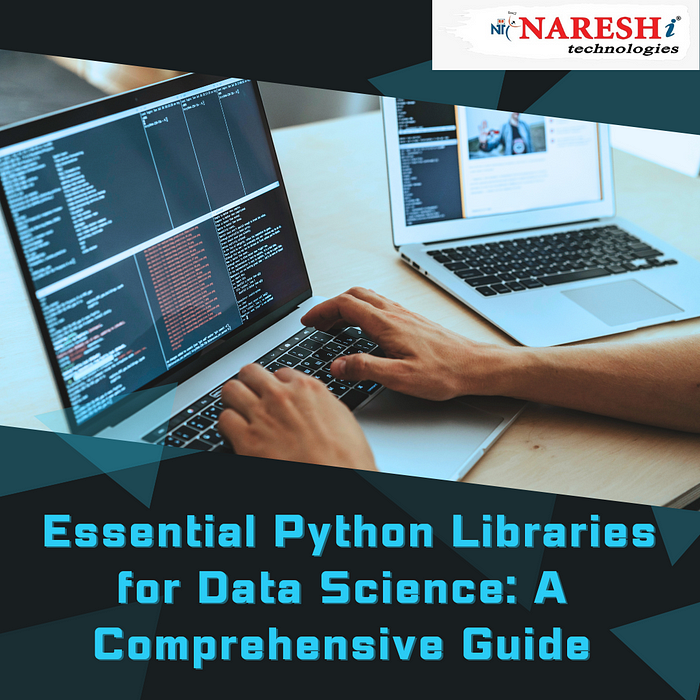Essential Python Libraries for Data Science: A Comprehensive Guide
- Get link
- X
- Other Apps
Essential Python Libraries for Data Science: A Comprehensive Guide
Python has become the go-to language for data science due to its simplicity, versatility, and an extensive ecosystem of libraries that cater to almost every aspect of data analysis, visualization, and machine learning. Whether you’re a beginner or an experienced professional, understanding the key libraries is crucial for excelling in the field of data science. This article highlights the most essential Python libraries for data science and their use cases.
1. NumPy
- Purpose: Numerical computing.
- Why It’s Essential:
NumPy is the foundation of data science in Python. It provides support for multidimensional arrays and matrices, along with a collection of mathematical functions to operate on them. It’s the backbone of many other data science libraries like Pandas and SciPy. - Key Features:
- Efficient operations on large arrays and matrices.
- Extensive mathematical capabilities, including linear algebra and Fourier transforms.
2. Pandas
- Purpose: Data manipulation and analysis.
- Why It’s Essential:
Pandas offers flexible data structures like Series and DataFrames, which make handling structured data intuitive. It simplifies tasks like cleaning, filtering, and aggregating data. - Key Features:
- Read/write support for multiple file formats (CSV, Excel, JSON, SQL).
- Powerful group-by and merge/join operations.
- Data cleaning and preprocessing.
3. Matplotlib
- Purpose: Data visualization.
- Why It’s Essential:
Matplotlib is the bedrock of Python visualization. It provides extensive control over plot elements, enabling users to create publication-quality charts and figures. - Key Features:
- Versatile plotting capabilities (line, bar, scatter, etc.).
- Customizable appearance of plots.
- Support for interactive plots in Jupyter Notebooks.
4. Seaborn
- Purpose: Statistical data visualization.
- Why It’s Essential:
Built on Matplotlib, Seaborn simplifies the process of creating attractive and informative visualizations. It’s particularly suited for visualizing statistical data. - Key Features:
- Built-in themes for aesthetically pleasing plots.
- Functions for complex visualizations like heatmaps and pair plots.
- Automatic handling of Pandas DataFrames.
5. Scikit-learn
- Purpose: Machine learning.
- Why It’s Essential:
Scikit-learn is the most widely used library for machine learning in Python. It provides simple and efficient tools for data mining, data analysis, and building predictive models. - Key Features:
- A comprehensive suite of machine learning algorithms.
- Tools for model selection, evaluation, and preprocessing.
- Integration with NumPy and Pandas.
6. TensorFlow and PyTorch
- Purpose: Deep learning and neural networks.
- Why They’re Essential:
TensorFlow and PyTorch are leading libraries for deep learning. TensorFlow is often used in production environments, while PyTorch is popular in research for its dynamic computation graph. - Key Features of TensorFlow:
- High scalability for training large models.
- Rich ecosystem, including TensorBoard for visualization.
- Key Features of PyTorch:
- Easy-to-use dynamic computation graph.
- Strong support for custom neural network architectures.
7. SciPy
- Purpose: Scientific computing.
- Why It’s Essential:
SciPy builds on NumPy to provide additional modules for optimization, integration, and statistical functions, making it a must-have for scientific applications. - Key Features:
- Signal and image processing.
- Solvers for differential equations.
- Optimization and integration tools.
8. Statsmodels
- Purpose: Statistical modeling and hypothesis testing.
- Why It’s Essential:
Statsmodels excels at handling statistical tests and linear regression models, making it invaluable for hypothesis-driven data analysis. - Key Features:
- Support for generalized linear models.
- Extensive statistical tests and diagnostics.
- Beautiful integration with Pandas.
9. NLTK and spaCy
- Purpose: Natural language processing (NLP).
- Why They’re Essential:
NLTK is a robust library for building NLP pipelines, while spaCy is designed for high-performance NLP tasks. - Key Features of NLTK:
- Tools for text preprocessing (tokenization, stemming, etc.).
- Rich collection of corpora for linguistic research.
- Key Features of spaCy:
- Fast and efficient tokenization.
- Pre-trained models for entity recognition and text classification.
10. Plotly and Bokeh
- Purpose: Interactive data visualization.
- Why They’re Essential:
For interactive and web-based visualizations, Plotly and Bokeh stand out. These libraries allow users to create dynamic, shareable visualizations. - Key Features of Plotly:
- Interactive dashboards.
- Support for 3D plots and maps.
- Key Features of Bokeh:
- High-performance interactive plots.
- Integration with web technologies.
Conclusion
Mastering these libraries equips you with a powerful toolkit to tackle diverse data science challenges, from data preprocessing to building machine learning models and presenting insights. Start with foundational libraries like NumPy, Pandas, and Matplotlib, and gradually expand your expertise to specialized tools like TensorFlow and Statsmodels.
By integrating these libraries into your workflow, you’ll enhance your productivity and ability to derive actionable insights from data. Happy coding!
For More Details Visit : https://nareshit.com/courses/data-science-online-training
Register For Free Demo on UpComing Batches : https://nareshit.com/new-batches
- Get link
- X
- Other Apps



Comments
Post a Comment